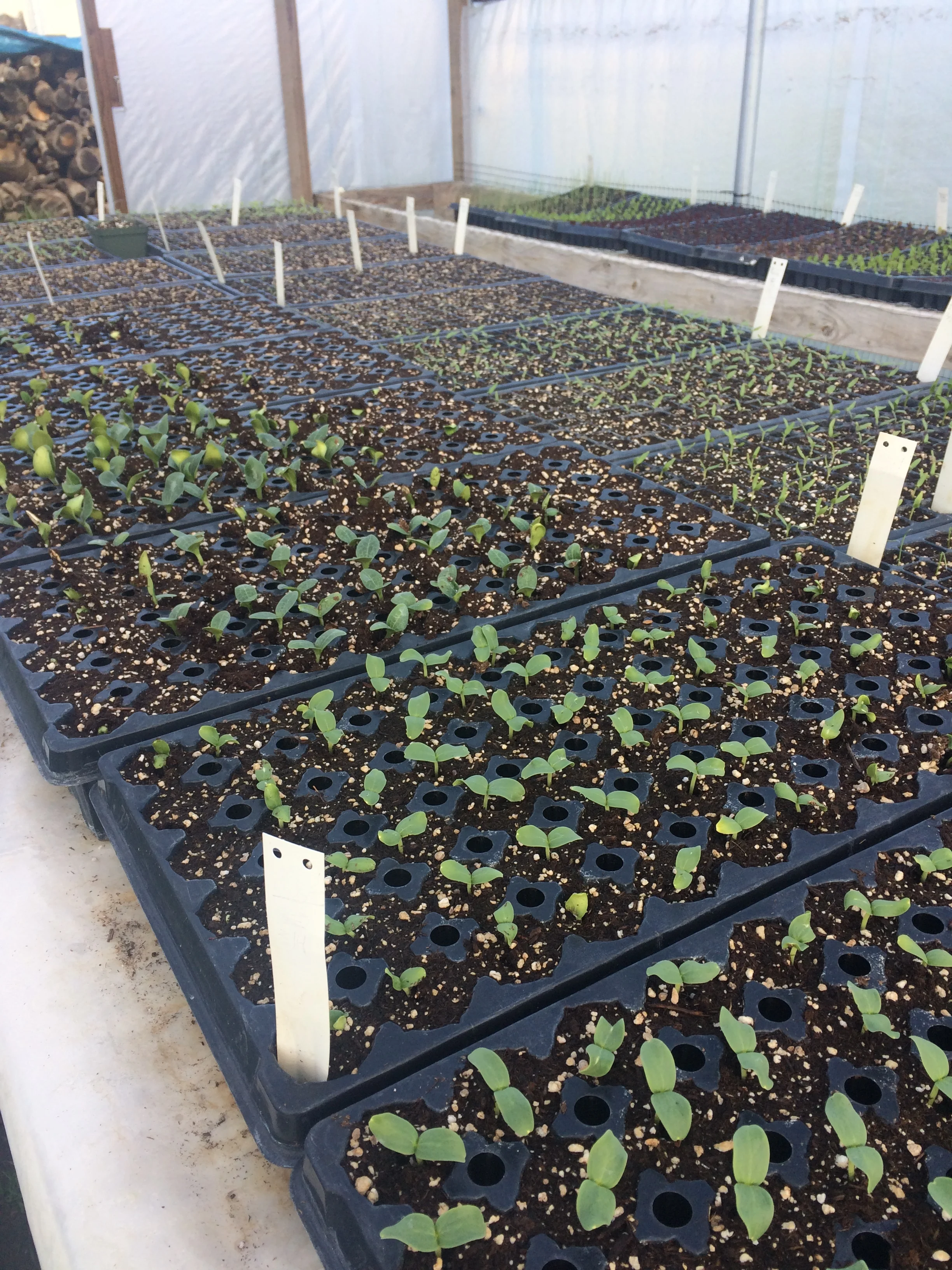Adapted from an article in the Napa Valley Register on April 17, 2019
It’s the time of year when farmers look around and see cotyledons everywhere. Cotyledons are a plant’s first “leaves.” These baby leaves are the plant’s first source of energy and look markedly different from the true leaves a plant will produce as it grows.
In the spring, a farmer’s greenhouse is teeming with all the seedling starts that will be planted in the ground for the season. Every day, more carefully sown seeds sprout and push out their cotyledons to begin life as a plant. For plant aficionados and farmers, an even lawn of cotyledons growing healthily in a seed tray is as cute and joyful as a chubby baby waving its arms in the air.
Out in the field, though, cotyledons have a whole other meaning for farmers. This long, wet spring has provided few opportunities for farmers to get in their fields and cultivate their soil. The clean beds we planted our crops into are slowly being covered by a lawn of not-so-welcome weed cotyledons.
At Sun Tracker Farm, we ideally weed our beds 10 days after we transplant our seedlings. At that point the transplants are established enough to withstand a little bumping while the weed seedlings are still small enough to uproot easily.
But the persistent rain and resulting mud we experienced this spring means no weeding, with a tractor or by hand. Thus the weed cotyledons make way for the true leaves of a mature plant that is much more difficult to remove. Not to mention the delay in actually planting our crops.
It’s at these moments that farmers must appreciate that control of nature is out of their hands. The same processes that allow our seedlings to germinate in the greenhouse cause our fields to be overrun by weeds. Plants will grow wherever they are planted, and weeds, after all, are just plants in the wrong place.
Farming is about staying calm no matter what problems arise and knowing you will find a solution somehow. So when you are wondering where the tomatoes are at the farmers market in a couple of months, remember the late rainy spring when farmers weren’t able to transplant. If they did, they probably watched their seedlings surrounded by an unwanted, yet still marvelous, lawn of cotyledons.
In honor of cotyledons and the abundance of greens and spring veggies at the market, I’m sharing with you a Southern-inspired recipe I invented on a wet day this month. Even the baby liked it!
Greens and Beans
3 cups red beans, soaked overnight
1 teaspoon fennel seed
Salt and pepper
1 pound of bacon
1 bunch carrots, chopped
2 large leeks, chopped
4 cloves garlic, minced
2 bunches greens, such as collards, kale, chard or cabbage, chopped
1 tablespoon mirin
Drain the beans and put them in a large pot with fresh water to cover them by 2 inches. Bring to a boil, then adjust the heat to maintain a simmer. Cook until the beans are tender, about 1 hour. Add fennel seed and season to taste with salt and pepper.
Cut the bacon crosswise about 1/2 inch wide. Fry in a heavy pan until crisp. Set the bacon aside and pour off all but about 4 tablespoons bacon fat. Add the carrots, leeks and garlic and cook over medium heat until slightly caramelized. Add the vegetables and the bacon to the beans. Add another tablespoon of bacon fat to the same pan, add the greens and cook, stirring, until they wilt. Add the mirin and season with salt and pepper.
Serve the beans and greens with steamed rice or cornbread.
Serve 3 to 4
